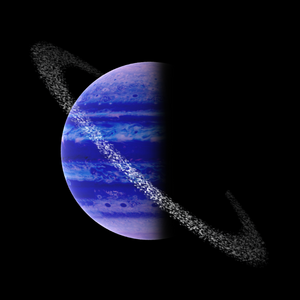Tsanfau
Jump to navigation
Jump to search
 | |
| Orbital characteristics | |
|---|---|
| Epoch A2000 | |
| Aphelion | 20.226 au (3.0258×109 km) |
| Perihelion | 18.633 au (2.7875×109 km) |
| 19.4296 au (2.90663×109 km) | |
| Eccentricity | ~0.0410026 |
| 85.6272 a (1027.526 months) | |
Average orbital speed | 6.758 km/s (4.199 mi/s) |
| Inclination | 2.55° |
| Satellites | 23+ natural satellites 3+ operational artificial satellites |
| Physical characteristics | |
Equatorial radius | 24525 km (15239 mi) |
Polar radius | 24004 km (14915 mi) |
| Flattening | 0.021482 |
| Circumference | 152456 km (94732 mi) (mean) |
| 7,400,000,000km2 (2,857,000,000 mi2) | |
| Volume | 5.98390 × 1013 km3 |
| Mass | 9.15537 × 1025 kg |
Mean density | 1.530 g/cm3 |
| 10.378 m/s2 | |
| 22.44 km/s (13.94 mi/s) | |
Sidereal rotation period | 0.65120 d (15.629 h) |
Equatorial rotation velocity | 2.7097 km/s (1.6837 mi/s) |
| 42.02° | |
| Albedo | 0.326 Bond |
| Temperature | -203.3 °C (at 1 bar) (-333.9 °F) |
| Atmosphere | |
| Composition by volume | 80.4% hydrogen (H2) 15.7% helium 3.6% methane (CH4) 0.3% other |
Tsanfau is the furthest planet from the sun in the Tendor System, with an average temperature of below -200 degrees celcius. The planet also hosts a fairly visible ring system of mostly ice and small rocks, where a good portion of the planet's moons are located. Tsanfau's high axial tilt is likely a result of a large collision in the past that offset it from its plane of orbit by a large amount, which also led to some of the planet's moons being offset from its plane of rotation.
The planet is classified as an ice giant, being comprised by various ices alongside gases, while its core is likely made out of metals and rock not unlike terrestrial planets.

